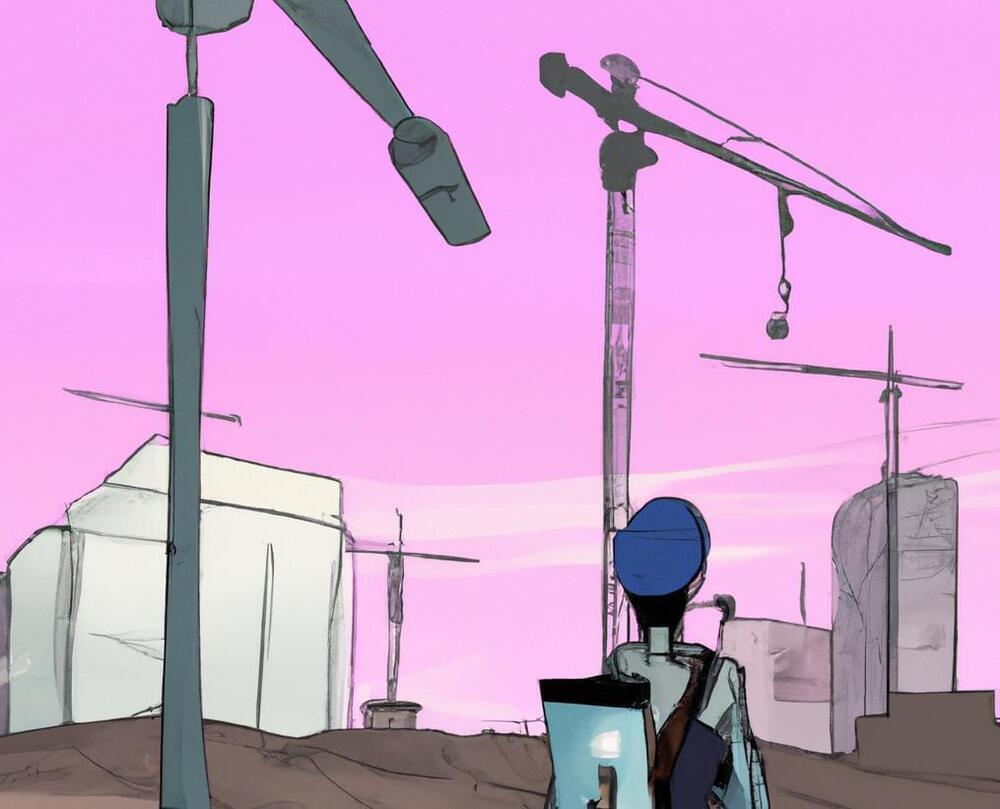LinkedIn.
This week saw the release of two dummy ads, one for an American beer and another for a pizza brand.
LinkedIn.
This week saw the release of two dummy ads, one for an American beer and another for a pizza brand.
Said by me, before Bill. really smart kids will probably check out by late 2020s, preferring AI tutors over in person. the idea for everyone who wants to to be able to use an AI tutor will take place mid 2030s. And debate will turn very nasty.
Bill Gates believes AI (artificial intelligence) chatbots like ChatGPT will be able to replace teachers in the near future. There’s a lot of hype surrounding AI and the 67-year-old Microsoft co-founder has been endorsing it lately.
According to Gates, generative AI models including ChatGPT will soon be able to help children learn to read and improve their grades. In other words, the billionaire suggests A.I. chatbots could oust teachers in the near future.
Earlier this month, ASU+GSV Summit announced Gates as a keynote speaker for the event. During the event that took place in San Diego, the visionary entrepreneur predicted that AI chatbots will be able to help children hone their writing skills in just 18 months.

Wow. Spoiler, quasars are galaxies colliding and part of the gases reacting with black holes in the middle of the galaxies. Does that mean we’re all doomed though we could galaxy hop in the distant future I suppose. And the rest of the dispersed gases will take millions or was it billions of years to make new stars again. Kinda reminds me of human life. We are born only to return to the Earth.
Scientists have unlocked one of the biggest mysteries of quasars—the brightest, most powerful objects in the universe—by discovering that they are ignited by galaxies colliding.
First discovered 60 years ago, quasars can shine as brightly as a trillion stars packed into a volume the size of our solar system. In the decades since they were first observed, what could trigger such powerful activity has remained a mystery. New work led by scientists at the Universities of Sheffield and Hertfordshire has now revealed that it is a consequence of galaxies crashing together.
The work is published in Monthly Notices of the Royal Astronomical Society.

Archaeologists in Spain have unearthed five life-size busts of human figures that could be the first-known human depictions of the Tartessos, a people who formed an ancient civilization that disappeared more than 2,500 years ago.
The carved stone faces, which archaeologists date to the fifth century B.C., were found hidden inside a sealed pit in an adobe temple at Casas del Turuñuelo, an ancient Tartessian site in southern Spain. The pieces were scattered amongst animal bones, mostly from horses, that likely came from a mass sacrifice, according to a translated statement (opens in new tab) published April 18.

Is there such a thing as absolute motion? Modern science, as represented by Einstein’s theory of relativity, says no. After all, absolute motion would require that there exists a single coordinate system — or common reference point — that all observers could agree is stationary. Such a coordinate system doesn’t exist.
But modern science has also found a way to observe the coordinate system of the entire visible Universe. If one can find a coordinate system in which the visible Universe is stationary, isn’t that the “right” one? What’s the truth behind this, and does it invalidate Einstein’s theory? And how does the yin-yang symbol come into play?
Einstein’s theory of relativity makes many counterintuitive claims, but those claims are consequences of one fundamental assumption: that any individual is perfectly justified in assuming that they are the one, unmoving, thing in the entire Universe. This assertion could be called the “cosmic egotist principle.” Essentially, you are the one thing around which the entire Universe revolves.
😗
Jetson/YouTube.
The company’s mission is “to make the skies available for everyone with our safe personal electric aerial vehicle,” and this futuristic vehicle does just that.

This is the official ispace landing coverage of HAKUTO-R Mission 1.

Very interesting piece.
Get Surfshark VPN at https://surfshark.deals/kyle — Enter promo code KYLE for 83% off and 3 extra months for FREE!
Free-to-use, exceptionally powerful artificial intelligences are available to more people than ever, seemingly making some kind of news every day. The problem is, the public doesn’t realize the problem in ascribing so much power to systems we don’t actually understand.
💪 JOIN [THE FACILITY] for members-only live streams, behind-the-scenes posts, and the official Discord: https://www.patreon.com/kylehill.
👕 NEW MERCH DROP OUT NOW! https://shop.kylehill.net.